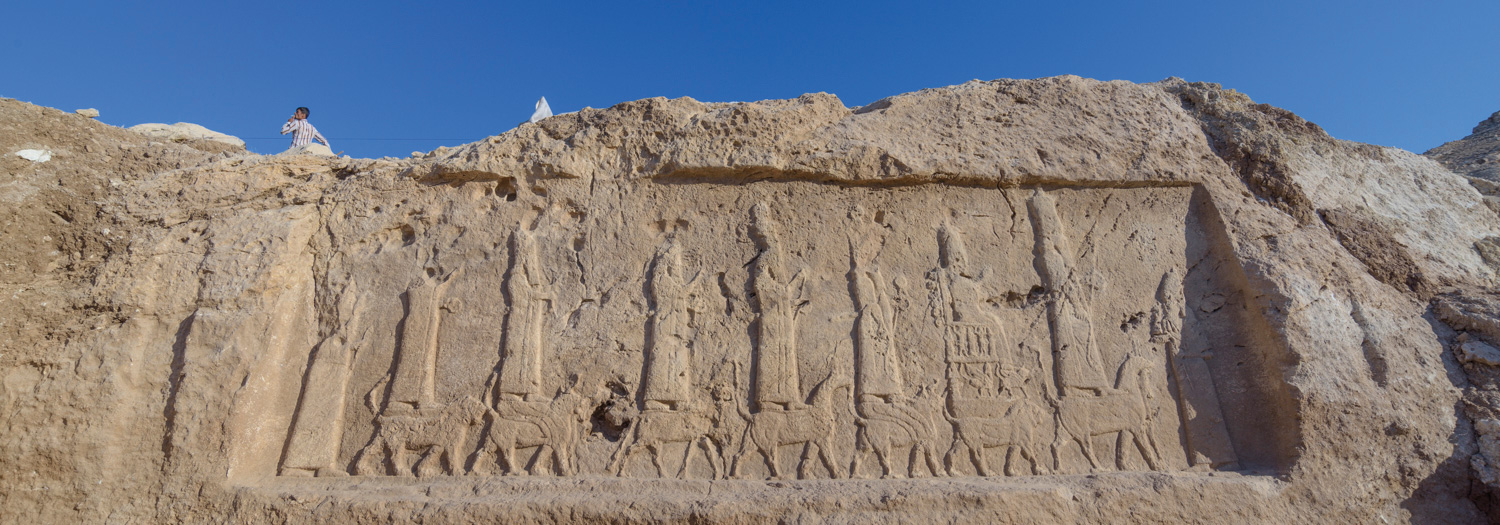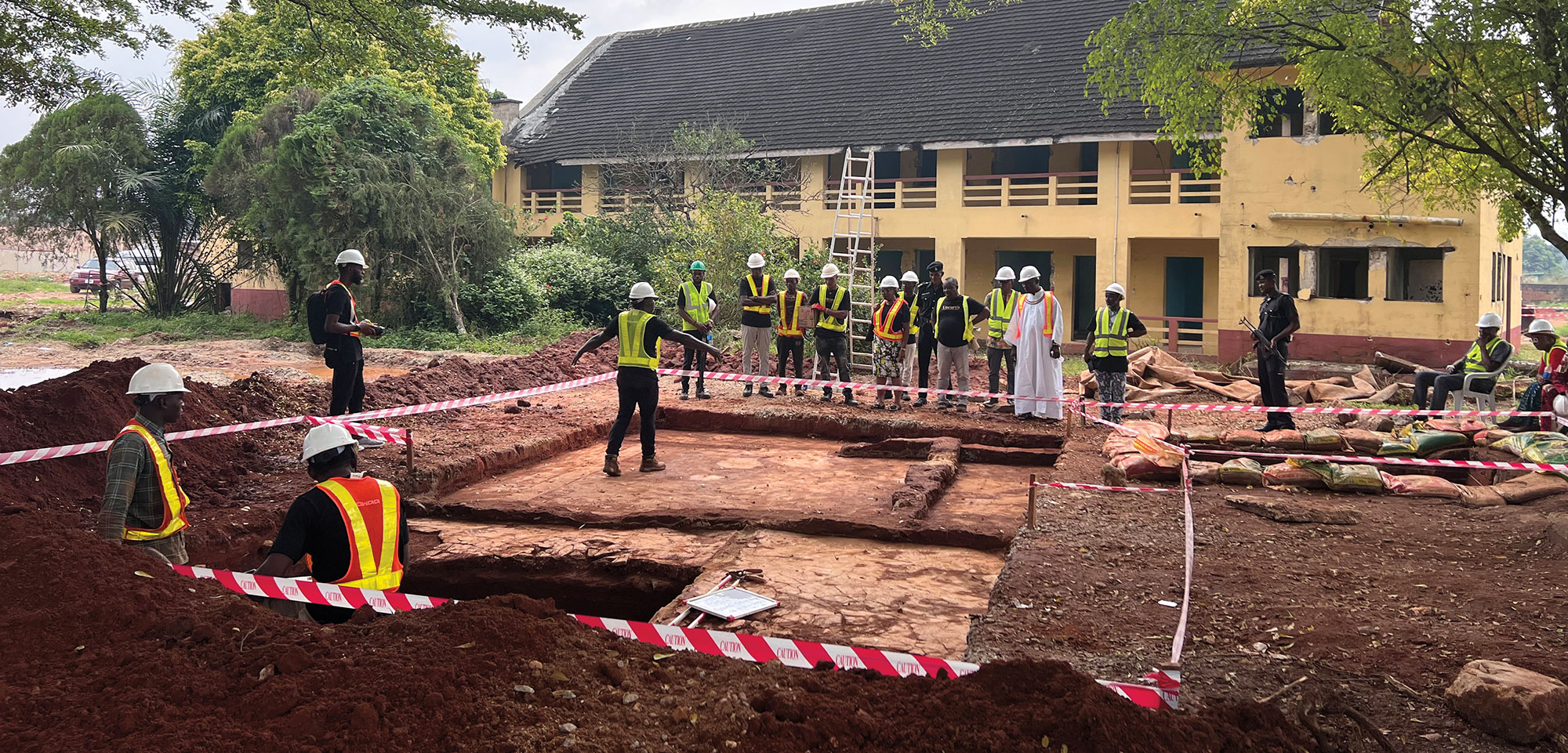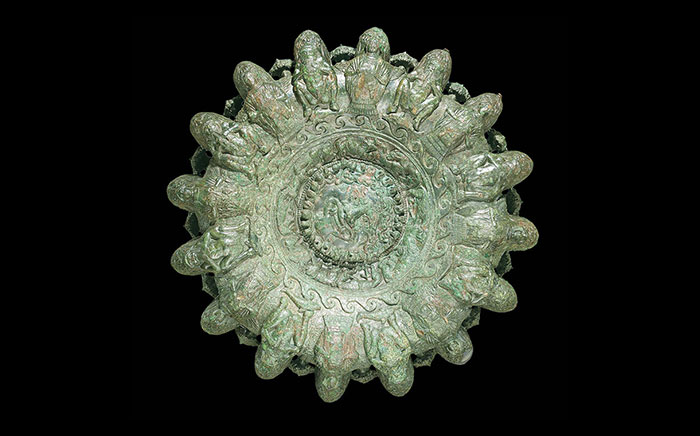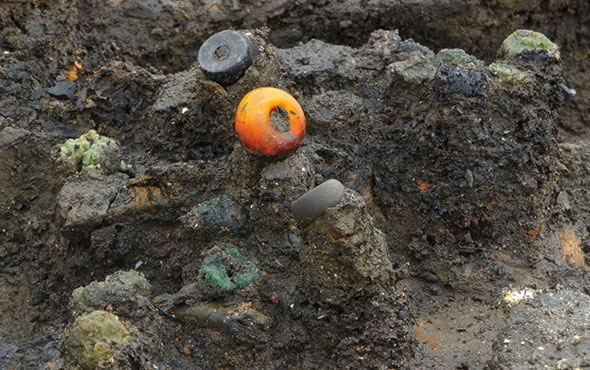WROCŁAW, POLAND—According to a Science in Poland report, the graves of more than 200 monkeys, dogs, cats, and calves have been recently unearthed by an international team of researchers led by Marta Osypińska of the University of Wrocław in the pet cemetery at Berenice, a port city built on the coast of the Red Sea in the first century A.D. by the Roman emperor Tiberius. Previous research has shown that many of the monkeys buried in the cemetery were rhesus macaques and bonnet macaques imported from India. Osypińska said that most of the monkeys had been wrapped in fabrics and placed in the graves as if they had been sleeping on their sides, covered in blankets, with their paws next to their faces. Opalescent shells rags, a cow’s tail, collars, harnesses, and the remains of a piglet and kittens were also found in the monkeys’ graves. Meanwhile, the remains of two calves were found at the bottom of two large pits in the cemetery. Both of their heads had been smeared with ocher, and a large amphora fragment had been placed over the head of the older calf. The researchers think the calves may have been sacrificed when the animal cemetery was established, or in honor of a sacred object in the area. To read about previous finds from the cemetery, go to "Around the World: Egypt."
Roman Pet Burials Examined in Egypt
News June 6, 2024
SHARE:
Recommended Articles
Artifacts July/August 2025
Maya Ceramic Figurine

Courtesy Ken Seligson
Off the Grid July/August 2025
Vichama, Peru

Lisa Trever
Digs & Discoveries July/August 2025
Bound for Heaven

Yoli Schwartz, Israel Antiquities Authority
Digs & Discoveries July/August 2025
Saints Alive

Berlin State Monument Office, Julia-Marlen Schiefelbein
-
Features July/August 2024
The Assyrian Renaissance
Archaeologists return to Nineveh in northern Iraq, one of the ancient world’s grandest imperial capitals
 (Land of Nineveh Archaeological Project)
(Land of Nineveh Archaeological Project) -
Letter from Nigeria July/August 2024
A West African Kingdom's Roots
Excavations in Benin City reveal a renowned realm’s deep history
 (Mike Pitts)
(Mike Pitts) -
Artifacts July/August 2024
Etruscan Oil Lamp
 (Courtesy Museo dell’Accademia Etrusca e della Città di Cortona; © DeA Picture Library/Art Resource, NY)
(Courtesy Museo dell’Accademia Etrusca e della Città di Cortona; © DeA Picture Library/Art Resource, NY) -
Digs & Discoveries July/August 2024
Bronze Age Beads Go Abroad
 (Courtesy Cambridge Archaeological Unit)
(Courtesy Cambridge Archaeological Unit)


